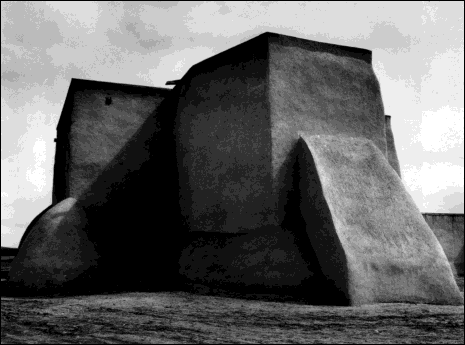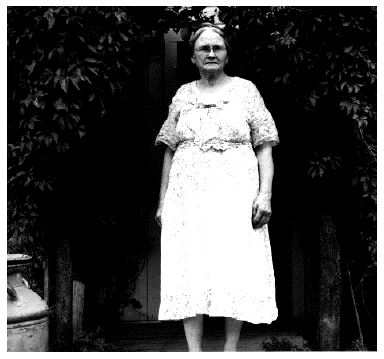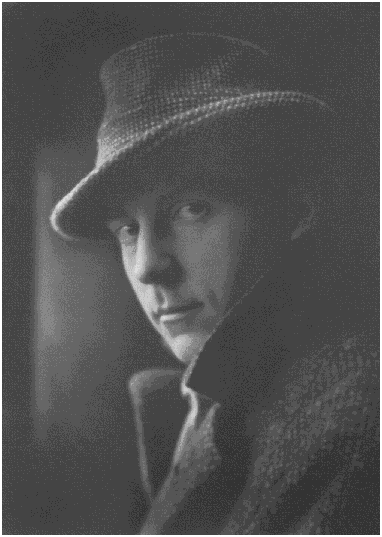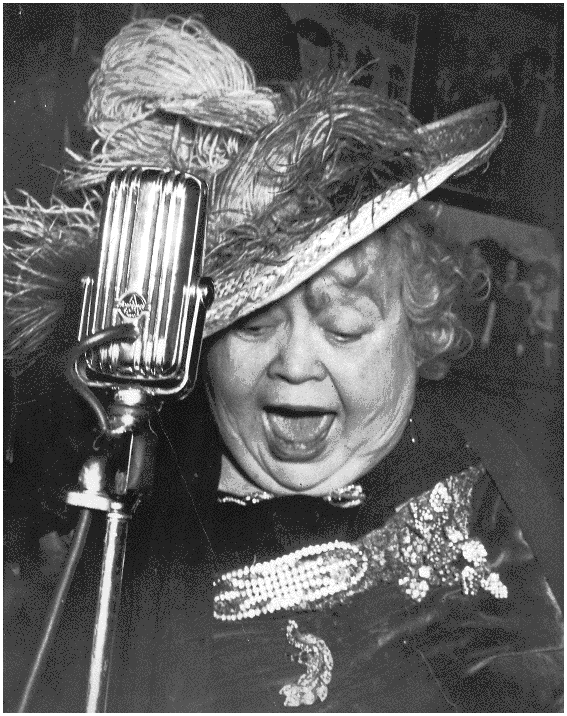United States
Photographers
A Student's Guide
Kristin G. Congdon
Karas Kelley Hallmark
(Greenwood Press)
Well, we can certainly see including Ralph Eugene Meatyard and his funny masks, and Lee Friedlander with his slightly off-center faces of supposedly normal people.There could be no doubts about the classicists: Dorothea Lange (Fig. 1) and the other historical figures ... the earliest being Edward Steichen (b. 1879), Edward Weston (1886) and the pioneer of American photography, Alfred E. Neumann --- I mean, Alfred Stieglitz (1864) --- although his shot of Georgia O'Keeffe offered in the book is neither his most memorable nor his most admirable.
Margaret Bourke-White turns up with all her repeatable machines, as does Imogen Cunningham with photographs of photographers. The youngest of the seventy-five artists represented in this volume is Anna Gaskell (b. 1969) ... second being Meghan Boody with her rather silly made-up fin de siècle shots of Psycho and Smut.
Some of these folks we've never heard of, have you? There is Martha Rosler who drives around taking shots of freeways and airports yawn. Someone named Joel-Peter Witkin who shows some really weird folk in embrace or on show (he gets three pix; most of the other artists get one).* Jan Groover who is fond of shots of kitchen utensils and who "made a series of digital photographs using a color inkjet printer to create pastel prints."Each composition is cluttered with items too random not to have been deliberately thrown together: part of a skull, loose bones, a toy horse, a blue plastic wine glass, a cherub, varied fabric swatches and bits of painted and colored paper.
 The authors have included Maplethorpe, Mann, and Arbus, and why not, even though they are such show-offs. Too, we have Richard Avedon who many professionals scorn but his take on beekeeper Ronald Fischer, naked head and all stingers, is alone well worth the whole opus (too bad it doesn't appear here).
The authors have included Maplethorpe, Mann, and Arbus, and why not, even though they are such show-offs. Too, we have Richard Avedon who many professionals scorn but his take on beekeeper Ronald Fischer, naked head and all stingers, is alone well worth the whole opus (too bad it doesn't appear here).We once learned that Avedon's legal team is always on the alert. In RALPH's predecessor magazine, The Fessenden Review, Douglas Cruickshank reviewed a book of his and devoted a full page to the snap of the beekeeper and quickly got a snotty letter from Avedon's attorney threatening us with mayhem or worse. We promised faithfully never to do him or it again.
Twentieth Century United States Photographers is designed for schools, but the editors would have been better advised to let the pictures speak for themselves. William Wegman, the funny dog man, appears here ---his Weimaraner named Man Ray in suit is one of the best of the twenty-seven color shots --- but where is the best human/animal photographer of them all, Weegee? Even Huntington buys Weegees?If a teacher of photography really wants to show the craft to students, he or she should have the students buy their own copy of Contemporary Photographers, edited by Colin Naylor. It was published by Saint James Press. The last edition I have came out in 1988. There is no buffonish commentary, just the facts, ma'am.For some reason, the writing in U. S. Photographers is so proletarian it makes your teeth hurt, telling us about families or religions or teaching posts that we (and the students) really don't need and shouldn't have to care about. Richard Misrach's picture of the fog rolling over the Golden Gate is a bore; Gordon Parks' shot of a black man, dressed in houndstooth jacket, weeping behind a broken windowpane is a heart-stopper.
--- Lolita Lark*When I sent a pre-publication copy of this article to a photographer-nut friend, he responded,
"Your bloomers are showing when you admit you've never heard of Joel-Peter Witkin. He's extremely well known,
certainly one of the better-known fine arts photographers of the second half of the 20th century."
I still say it's spinach, and I say to hell with it.--- LL


